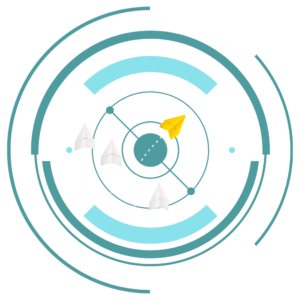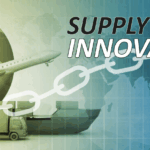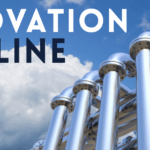Thriving companies don’t sit back and enjoy their success; they are constantly innovating. It is not always the sensational, market-shifting, disruptive innovations that companies invest in, but the commitment of substantial resources to Continuous Innovation.
What is Continuous Innovation?
Continuous innovation is an organizational approach of consistently generating, testing, and implementing new ideas across products, services, and processes. It creates a dynamic culture of ongoing improvement, where innovation isn’t a one-time event but a perpetual strategic commitment to adaptation, learning, and value creation.
Innovative organizations allocate resources to adjust, tweak and revise products, services, ideas, and methods to maintain their competitive edge.
What are the main steps in the continuous innovation process?
Continuous innovation isn’t just a mindset; it’s a disciplined approach, with each step building on the last to turn sparks of ideas into tangible improvements. Here’s how forward-thinking organizations typically navigate the journey:
- Idea Generation:
The engine starts with generating fresh ideas. This could mean scheduling a classic brainstorming session (don’t forget the Post-its!), mining customer feedback from support calls, reviewing market data, or simply opening up that humble suggestion box. Whether it’s insights from employees at the frontline or customer comments on social media, diverse perspectives fuel better ideas. - Evaluation and Selection:
Next comes separating the wheat from the chaff. Here, teams weigh each idea against strategic objectives, available resources, technical reality checks, and market appetite. The goal: prioritize what’s truly promising while keeping the “maybe next time” pile ready for later exploration. - Prototyping and Testing:
Once a short list emerges, it’s time to get hands-on. Think rapid prototyping, crafting a minimum viable product (MVP), or small-batch pilots. Tools like 3D printers, digital mockups, or limited user trials let you see how an idea feels in the wild—usually revealing hiccups, hidden strengths, and unexpected turns. - Refinement and Iteration:
Feedback—both the applause and the raised eyebrows—is golden. Armed with real-world reactions, teams dig into refinement, tweaking features, redesigning problem spots, and iterating fast. This isn’t about perfecting a concept overnight, but sharpening it with every cycle. - Implementation and Rollout:
Once the solution is polished, it heads for the big stage: integration into products, services, or operations. Careful planning and collaboration ensure changes are seamless—think of it as launching a new app update, not a system-wide software meltdown. - Ongoing Evaluation:
The story doesn’t end at launch. Organizations keep their ears to the ground, monitoring metrics, tracking customer satisfaction, and measuring how closely reality matched expectations. Adjustments and course corrections often follow quickly. - Learning and Culture Building:
Finally, every round of innovation delivers valuable lessons. Capturing these insights—what worked, what didn’t, where surprises lurked—cements a culture where continuous learning is second nature. And yes, this knowledge loops right back, feeding future rounds of ideation.
Through these interconnected steps, continuous innovation becomes less of a lofty ideal and more of a reliable, repeatable engine for growth and adaptation.
How Continuous Innovation Stands Apart
Continuous innovation takes a different path than traditional or discontinuous innovation. While traditional innovation tends to favor big, dramatic leaps—a blockbuster product launch or a disruptive overhaul—continuous innovation is all about ongoing, steady progress. Think of it as regularly fine-tuning the engine while the car is running, not just waiting for the next major redesign.
Instead of betting everything on sporadic breakthroughs, organizations practicing continuous innovation focus on frequent, smaller adjustments. These incremental improvements help them stay agile, respond to shifts in customer expectations, and keep pace with evolving markets. It’s less about revolutionizing the wheel overnight and more about keeping it spinning smoothly, day after day.
By weaving innovation into daily operations, companies can adapt faster than those waiting for the next “big idea,” ensuring they remain competitive through constant evolution rather than sudden transformation.
The Rules of Continuous Innovation:
Adaptability, Learning, and Growth
Adaptability, Learning, and Growth
It’s not just companies that are constantly innovating. The world of competitive sport is well known for its relentless pursuit of inventive adaptations to enhance team performance within the rules of the game. Rassie Erasmus, the Director of Rugby for South Africa’s World Champion Springboks, is widely regarded as one of the most innovative coaches in modern rugby. With some controversy arising, Erasmus introduced the concept of the “Bomb Squad” where he strategically uses substitutes to bring fresh energy to the team rather than simply using the bench for injury replacements. The impact of this strategy has been enormous and one of the many innovations that propelled the Springbok Rugby team to the number one spot in the world this year.
But what truly sets high-performing teams—on the field or in the boardroom—apart is their commitment to continuous learning and adaptation. The most successful organizations and sports teams alike foster a culture where knowledge sharing is encouraged, lessons learned are captured, and insights from every experiment or match are used to inform the next move. This creates a powerful feedback loop: innovation fuels performance, and reflection on those innovations drives the next wave of improvement. In this way, adaptability isn’t a one-time tactic but an ongoing process that ensures lasting growth and a sustained competitive edge.

Examples of Continuous Corporate Innovators
Continuous innovation is all around us and it is human nature to adapt and try new methods or processes to strive for improvement. Companies, however, have added incentives of market share and profits.
1
Amazon’s Data Driven Approach, a Proactive Innovation Strategy
Amazon is an over achiever when it comes to Continuous Innovation. With the access that this giant of e-commerce has to data – the company constantly refines its operations to improve the customer shopping experience.
Customer feedback is a key element of continuous innovation and Amazon has, to use another sporting metaphor, “knocked it out of the park”.
But it’s not just about gathering the data—what sets continuous innovators apart is what they do with it. After rolling out a new idea, these organizations actively gather customer insights, closely monitor key metrics, and assess satisfaction levels to understand how well their innovation is landing. By analyzing the impact on business goals and day-to-day experiences, they quickly identify what’s working, what’s not, and where there’s room for further improvement or fine-tuning. This relentless loop of feedback and evaluation ensures that innovation isn’t just a one-and-done event, but a living, breathing process—constantly adapting to meet evolving expectations.
2
User Research Drives Apple’s Design Process
Apple conducts continuous and extensive user research. Their design team follows an iterative approach to refine and enhance their products based on in-depth customer research. They gather intelligence on what features really matter to their customers and get to work to update products based on these insights paying particular attention to detail.
This process doesn’t end at product launch. Apple’s approach centers on iterative refinement: after releasing a prototype or new product, they actively seek feedback and data from users, customers, and stakeholders. With each round of input, incremental changes are made—addressing any pain points, enhancing features, and polishing the user experience. By continuously incorporating this feedback into every stage of development, Apple ensures that each version is better than the last, resulting in products that not only meet but anticipate customer needs. With a market cap of $3.7 trillion, this approach seems to be working.
3
Nike Harnesses Innovation for Sustainability
3D Printing is popping up all over the place and Nike is using this technology to commit to further their sustainability efforts. The company will reduce waste material by introducing 3D printing technology into its manufacturing process. Nike will be able to make unique and personalized products that are cost-effective and environmentally friendly, all bottom-line boosting attributes.
These examples highlight the importance of leveraging innovation to drive profit and market share. A commitment to continuous innovation, whether through data, design, or technology, can lead to significant competitive advantages and long-term success.
These examples highlight the importance of leveraging innovation to drive profit and market share. A commitment to continuous innovation, whether through data, design, or technology, can lead to significant competitive advantages and long-term success.
Best Practices for Continuous Innovation
The Role of Leadership in Sustaining Innovation
When it comes to fostering ongoing innovation, leadership isn’t just a background cheerleader—it’s the engine that keeps the organization moving forward. Leaders who genuinely champion innovation don’t just make the occasional grand speech about the future; they model curiosity, actively champion bold ideas, and ensure teams feel empowered to experiment.
What does this look like in action? Think of leadership as the gardener for your company’s innovation garden: providing rich soil (resources), sunlight (support), and regular watering (ongoing encouragement). When leaders dedicate time and resources to new initiatives, openly support risk-taking, and reward creative problem-solving, it sends a clear signal—fresh thinking isn’t just tolerated, it’s expected.
This top-down commitment helps innovation become second nature, woven into daily work processes rather than tacked on as an afterthought. Great leaders at companies like Google or 3M are famous for giving teams both the freedom and framework to explore, knowing that the next big leap often starts with just one curious question.
Services vs. Solutions: Shift your focus from passive service delivery to proactive problem-solving fostering deeper customer engagement and meaningful outcomes.
Cultivate a Culture of Innovation: Create a supportive environment for ideation and empower employees with digital tools like Ezassi Idea Management Software or Technology Discovery Software to encourage creativity. Go beyond simply offering tools—foster a bottom-up approach where employees at every level are encouraged to propose new ideas, take initiative, and actively participate in innovation initiatives. Provide access to training and mentorship, and create an atmosphere where risk-taking and learning from failure are celebrated rather than penalized.
Leverage Data: Democratizing data enables collaboration, better decision-making, and process optimization, unlocking significant organizational value.
Human-Centered Technology Integration: Use emerging technologies like AI to complement human efforts to ensure designs reflect real consumer needs, raising both experience and outcomes.
Talent Management: Design a talent strategy that nurtures distinct capabilities, promotes a growth mentality, and provides continuous learning opportunities to keep employees engaged and prepared for the future. Empower your workforce by giving them the autonomy and resources to pursue bold ideas, supporting them with guidance and an environment that values experimentation and growth.
How Continuous Innovation Supercharges Productivity and Engagement
The ripple effects of a sustained commitment to innovation run deep—especially when it comes to operational efficiency and your people.
Streamlining Success: Efficiency and Productivity Gains
Embracing a culture of continuous innovation drives smarter, faster ways of working. By regularly challenging the status quo and inviting new ideas, companies can spot outdated processes and say goodbye to bottlenecks. Whether deploying smart automation tools or introducing lean, tech-enabled workflows, the result is a more nimble organization—one that gets more done with fewer headaches. Efficiency becomes baked into your DNA, not a one-off project.
Energizing Your Team: Building Engagement from the Inside Out
Innovation isn’t just about fresh products or shiny tech; it’s a magnet for talented, motivated people. When employees feel empowered to pitch ideas, experiment with new approaches, and take ownership of projects, they’re more invested in their work. This sense of ownership fuels higher satisfaction, lowers turnover, and builds an energized culture—think about teams at places like Atlassian or Netflix, where creativity and initiative don’t just add value; they’re expected.
When you nurture an environment where curiosity and collaboration thrive, you’ll see a virtuous cycle: engaged teams drive better business results, and strong business outcomes reinforce innovation as your default mindset.
Overcoming Resistance to Continuous Innovation
Of course, fostering a truly innovative culture isn’t all smooth sailing—resistance to change is as perennial as weeds in any thriving garden. Whether it springs from employees who feel comfortable with tried-and-true methods or stakeholders wary of new risks, overcoming these roadblocks takes a hands-on, people-first approach.
Start by communicating a compelling vision. Make the “why” behind innovation crystal clear, tying it to shared goals and real-world benefits for teams and the organization as a whole. This transparency helps everyone see themselves in the future you’re building together.
Next, involve employees early and often. Invite input, celebrate creative thinking, and highlight quick wins—those small successes that prove new ideas can take root and blossom. Empower champions at every level of the organization to model the behaviors you want to see, so innovation doesn’t feel like a top-down edict, but a collective effort.
Don’t forget training and support. Offer workshops on change management, design thinking, or digital literacy to make sure everyone feels equipped for new ways of working. Bringing in external experts from organizations like IDEO or McKinsey for fresh perspectives can also spark enthusiasm and diffuse apprehension.
And finally, approach resistance with empathy—not everyone is thrilled about shaking things up. Listen to concerns, address fears directly, and treat setbacks as learning opportunities. In short: nurture patience, persistence, and positivity to keep momentum alive.
By thoughtfully addressing resistance, organizations lay the groundwork for an innovation strategy that isn’t just another initiative, but a true catalyst for lasting transformation.
Establishing an Innovation Strategy that Delivers
A successful innovation strategy starts with clarity—and alignment. Begin by defining your organization’s north star: What are your overarching ambitions? Are you seeking to expand to new markets, launch disruptive products, or simply outpace the competition in operational excellence? Setting these top-level objectives ensures every innovation effort has a purpose and target.
From there, it’s about focus. Identify which business areas or customer needs offer the most opportunity for meaningful change. For instance, are you ready to boost the customer experience à la Amazon, or does your future lie in sustainable design like Nike? Prioritizing these hotspots for innovation allows you to direct resources, talent, and energy where they’ll have the greatest impact.
Don’t forget resource allocation—it’s more than budget lines and project plans. Innovation needs the freedom to move, so carve out dedicated time, cross-team collaboration, and the right digital tools to support experimentation.
Finally, keep your strategy visible and flexible. Ensure everyone understands not just the what, but the why behind innovation priorities. And as feedback rolls in from customers and the market, revisit and refine your strategic focus so innovation doesn’t just keep up, but sets the pace for long-term growth.
Balancing Today’s Wins with Tomorrow’s Breakthroughs
Navigating the tension between quick wins and big-picture ambitions is where the best innovation leaders earn their stripes. The most successful organizations don’t force an “either-or” decision—they strike a thoughtful balance by delivering results now while planting seeds for the future.
Start by setting clear, measurable short-term goals that address immediate customer needs or operational challenges. These fast, visible successes build momentum and show stakeholders that innovation delivers tangible value. At the same time, dedicate time and resources to longer-term bets: blue-sky R&D projects, untested ideas, and disruptive technologies (think moonshot labs at places like Alphabet or the sustainability initiatives brewing at Patagonia).
A practical approach? Create parallel tracks. One team may focus on enhancing current offerings, while another experiments beyond the status quo—both celebrated for their contributions. Encourage cross-pollination between groups so insights from quick wins can inform future-shaping work, and long-term learnings trickle back to refine what you offer today.
Ultimately, it’s about embracing dual horizons. Invest in strategies that satisfy today’s pressing needs while intentionally nurturing the innovative thinking that will keep your organization ahead for years to come.
Promote Cross-Functional Collaboration
Break down internal silos and bring diverse minds together—this is where true innovation often sparks. When teams from different backgrounds and departments collaborate, they combine unique perspectives and specialized expertise that might otherwise remain hidden.
Encourage regular brainstorming sessions that invite input from product development, marketing, operations, and customer service alike. Support open communication channels and shared digital workspaces (think Slack, Trello, or Microsoft Teams) where everyone can contribute ideas and feedback in real time.
Leaders should champion this collaborative spirit by recognizing and rewarding group achievements. Consider creating innovation task forces or “tiger teams” composed of individuals from varied functions who tackle specific challenges. Not only does this foster creative problem-solving, but it can also build camaraderie and break habitual thinking patterns.
Ultimately, cross-functional collaboration gives rise to solutions that are more well-rounded, practical, and impactful—often exceeding what any single group could achieve on its own.
Goal focused: A unifying purpose inspires trust, motivation, and innovation within teams, enabling organizations to adapt to change and excel.
Agility & adaptability: Be flexible and adaptable to market changes, new disruptive technologies and customer needs.
Encourage External Collaboration and Open Innovation
Organizations can unlock new possibilities by reaching beyond their own four walls. Building strong partnerships with universities, research institutions, suppliers, startups, and even customers can bring in a wealth of fresh insights and expertise. Consider co-hosting innovation challenges, sponsoring hackathons, or engaging in collaborative R&D initiatives with groups like MIT, local incubators, or even forward-thinking competitors.
Additionally, establishing open channels—such as joint ventures and strategic alliances—enables companies to tap into a broader ecosystem of talent and ideas. This approach not only accelerates problem-solving and product development but also helps to foresee market needs before the competition does.
By actively seeking diverse perspectives and welcoming outside input, organizations expand their innovation toolkit and stay nimble in a rapidly changing environment.
The ultimate goal of continuous innovation is to create a sustainable competitive advantage by being consistently adaptive, creative, and forward-thinking.
Safeguarding Intellectual Property in a Culture of Continuous Innovation
Innovation doesn’t just spark bright ideas—it often generates intellectual property (IP) assets that deserve careful protection. As your teams push boundaries and experiment, it’s crucial to have proactive strategies in place to safeguard patents, copyrights, trademarks, and trade secrets.
Start by educating employees on the value of IP and the importance of documenting inventions or new processes as they emerge. Implement easy-to-follow procedures for capturing and evaluating IP during the innovation process, so nothing slips through the cracks.
Beyond internal vigilance, maintaining strong legal protections is essential. Regularly review your IP portfolio and coordinate with legal advisors to ensure filings and registrations are up-to-date—especially when collaborating externally or entering new markets. Initiatives like non-disclosure agreements (NDAs) for partners, robust cybersecurity measures, and clear internal policies help mitigate risks of infringement or misappropriation.
Staying alert also means monitoring the competitive landscape. Keep an eye on similar patents, trademarks, or creative works to reduce the risk of accidental overlap or disputes. If issues arise, address them promptly and decisively to protect both your assets and reputation.
A robust IP strategy empowers innovation to flourish—giving your organization the confidence to take risks, share ideas, and build sustainable advantage without exposing hard-won breakthroughs to unnecessary risk.
From Prototype to Practice: Implementing Innovation
Transitioning from promising prototypes or MVPs to tangible solutions in the real world is where the magic—and muscle—of continuous innovation truly emerges. This phase goes beyond celebrating a finished test model; it’s about seamlessly weaving innovation into the fabric of your operations.
- Strategic Rollout: Begin by mapping out a thorough, step-by-step launch plan. Consider every department, stakeholder, and process that will be touched by the new solution. Clear timelines, ownership, and communication channels are your safety net.
- Scaling Smart: Ensure your innovation can withstand increased demand and diverse use cases. This may mean ramping up production, upgrading systems, or expanding training—whatever it takes to move confidently from pilot to company-wide adoption.
- Change Management: Support your teams through the transition. Equip them with training sessions, centralized resources, and feedback forums. Tools like Slack, Miro, or Trello can help maintain transparency and collaboration during change.
- Monitoring & Optimization: Don’t just set and forget. Establish key metrics to track performance and quickly identify (then address) any growing pains. Encouraging feedback at this stage signals to teams that innovation is an ongoing journey, not a one-time event.
By approaching implementation and launch as a structured, inclusive, and iterative process, organizations can ensure their innovations take root—delivering lasting value while remaining agile for future opportunities.
Rapid Prototyping and Iterative Development
Adopting rapid prototyping and iterative development is key to accelerating innovation. By building quick, low-risk versions of ideas—think prototypes or MVPs—organizations can efficiently test concepts and gather real-world customer feedback before investing significant resources. This hands-on approach allows teams to:
- Respond to market shifts and user preferences with agility
- Uncover valuable insights early by using tools like Figma or InVision for fast digital prototyping
- Continuously refine solutions through feedback loops, ensuring each version aligns more closely with genuine customer needs
- Make data-informed decisions, reducing the cost of missteps and enabling faster time-to-market
In short, rapid prototyping and iteration fuel a culture of experimentation and learning, helping organizations spot what works, pivot quickly when needed, and ultimately deliver more successful, user-centric innovations.
Role of Prototyping and Testing in Continuous Innovation
Prototyping and testing serve as the bridge between bold concepts and real-world solutions. By rapidly building prototypes or Minimum Viable Products (MVPs), organizations can turn abstract ideas into something tangible. This hands-on approach accelerates learning, reduces risk, and provides a low-cost way to explore possibilities before making larger investments.
Testing these prototypes with actual users enables teams to:
- Gather authentic feedback early in the process
- Validate or challenge their assumptions
- Uncover opportunities for improvement
This iterative loop—build, test, learn—helps teams refine their products or services so they better align with customer needs and expectations. Ultimately, prototyping and testing are vital for ensuring that innovation efforts don’t just look good on paper, but have real impact in the market.
Establishing Metrics for Innovation Success
Define Success with Clear Metrics:
It’s essential to set unambiguous benchmarks to evaluate the real impact of your innovation strategies. Start by identifying what “success” looks like in your organization—perhaps it’s a boost in revenue, an uptick in market share, delighted customers, or more engaged employees.
Track What Matters:
Establish regular measurement using indicators such as:
- Revenue generated from new products or services
- Speed to market for new initiatives
- Customer satisfaction scores tied directly to recently launched innovations
- Employee participation rates in innovation campaigns
- Rate of idea adoption or implementation
Continuous Feedback Loops:
Don’t let metrics gather dust—review them frequently. This ongoing evaluation helps you spot trends, capitalize on strengths, and course-correct quickly, ensuring your innovation strategy continuously evolves and drives real value.
Addressing the Challenges of Consistent Change
There are some challenges that arise with Continuous Innovation along with the benefits. The speed at which a company operates in a changing environment can mean that managers often lack the time to devote to effective innovation processes. The Ezassi Services Team is available to help with our client-customized research program, harnessing AI powered search automation technology. There are always risks involved in the process and determining the correct level of risk appetite is imperative to success. Idea Management is a critical part of the process and a streamlined process for idea generation, storage and decision making is essential. Ezassi’s Idea Box allows you to gather insights that drive meaningful product and service enhancements, ensuring your business evolves alongside market demands.
Establishing Effective Idea Management Systems
To address these challenges, it’s vital to put in place robust systems and processes to capture, evaluate, and prioritize ideas efficiently. Whether through innovation portals, suggestion programs, or dedicated platforms for idea submission and evaluation, these channels encourage a steady flow of creative input from all levels of the organization. Transparent, well-defined processes for evaluating ideas, providing feedback, and advancing the most promising concepts keep innovation efforts focused and actionable. By consistently refining how ideas are managed—moving them smoothly from conception to implementation—organizations can foster a culture where innovation isn’t just encouraged, but operationalized for continuous growth and adaptation.

Contact Ezassi to facilitate Continuous Innovation
- Regularly generate and implement new ideas
- Rapidly respond to changing market conditions
- Stay ahead of competitive challenges
- Continuously enhance value for customers and stakeholders






